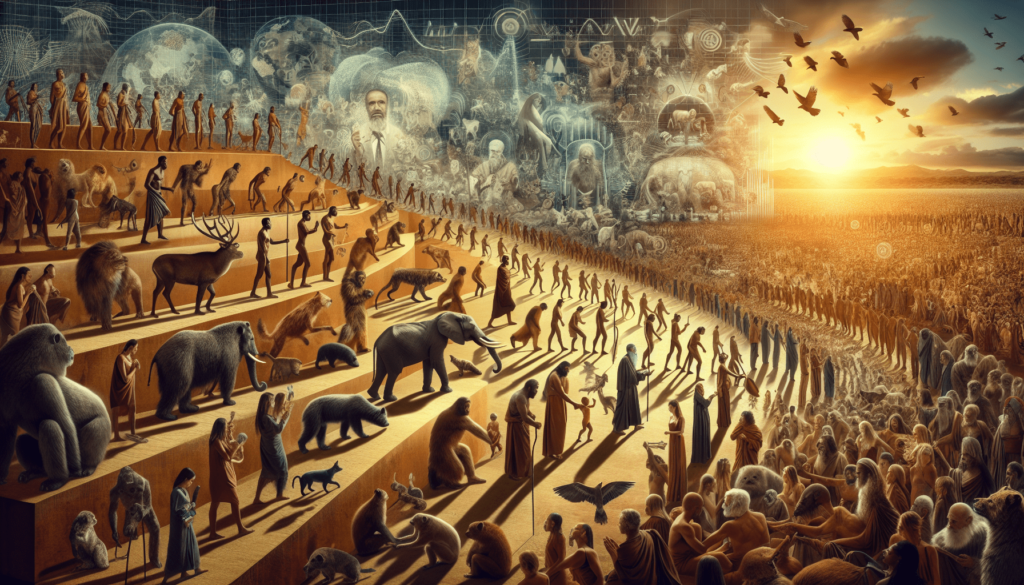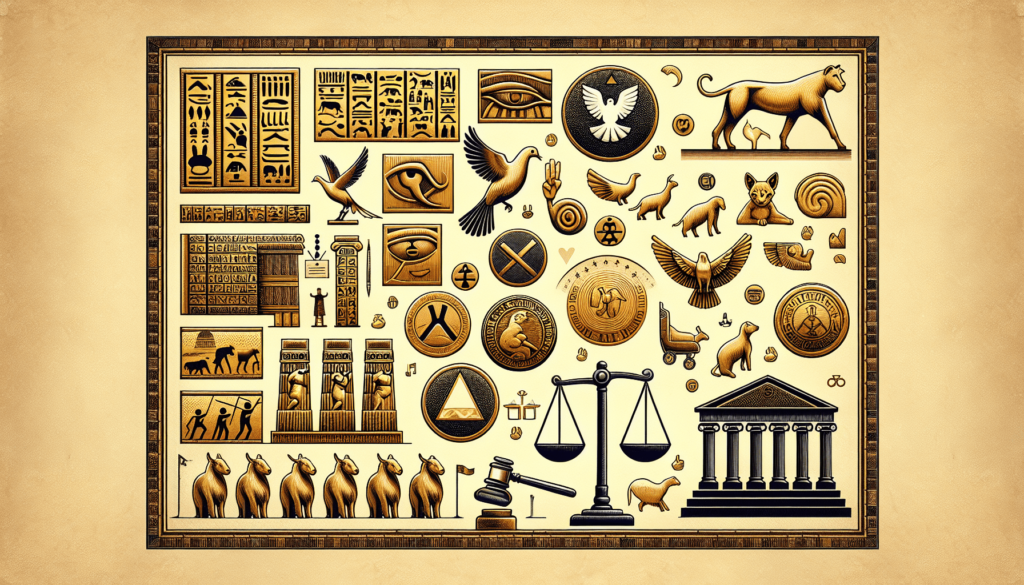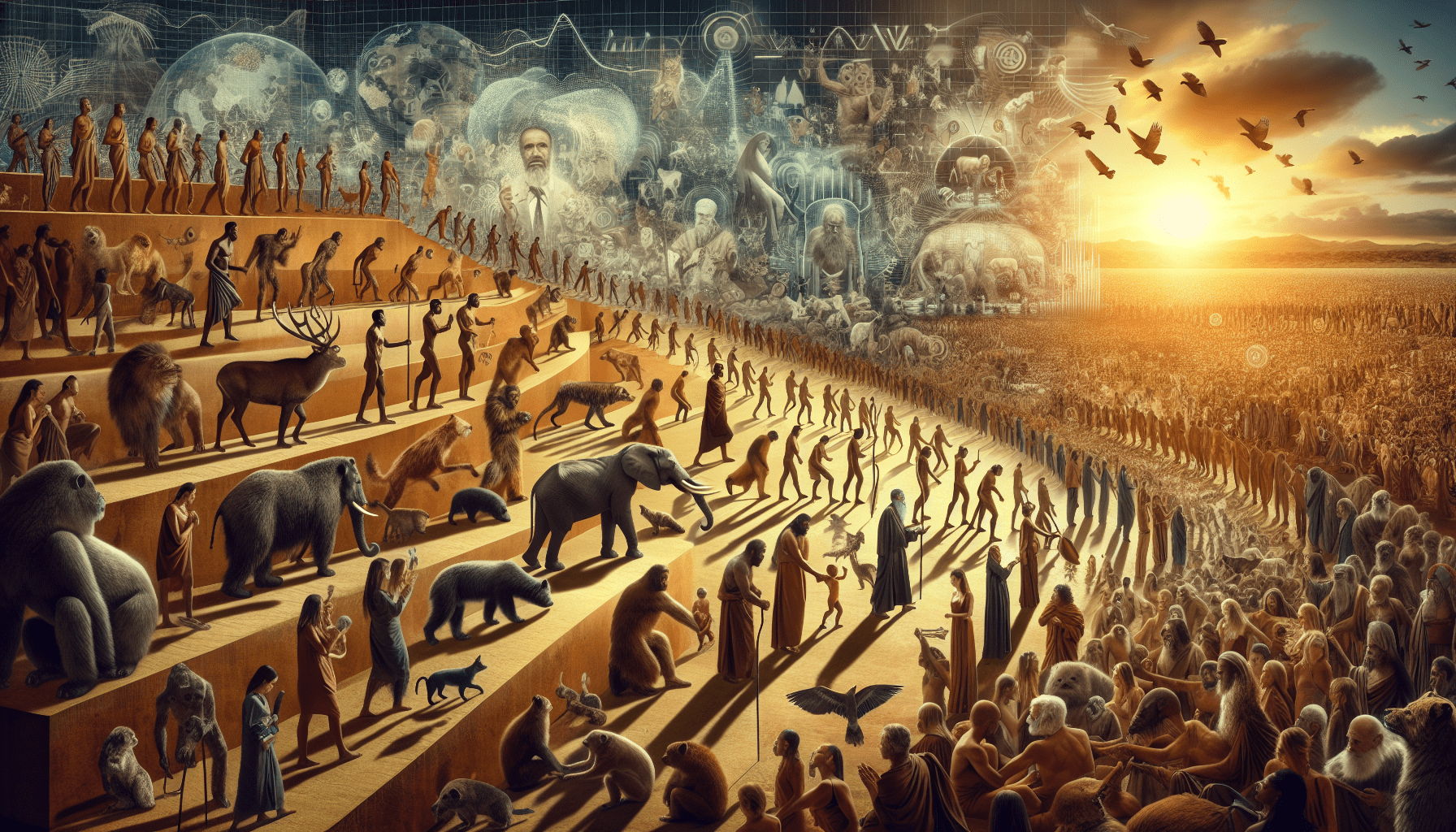Imagine a world where animals are no longer seen as mere commodities, but as sentient beings deserving of protection and compassionate treatment. In this captivating article, we will explore the fascinating journey of animal rights legislation throughout history. From the ancient civilizations that first recognized the value of animals to the modern-day advancements in ethical treatment, join us on a friendly exploration of how society’s perception of animals has evolved, and how it has led to the development of laws that seek to ensure their welfare. Get ready to embark on a historical adventure that will leave you with a deeper appreciation for the importance of animal rights legislation.
Ancient Civilizations
Early Societies and Animal Rights
In ancient civilizations, such as Ancient Egypt and Ancient Greece, there were varying views on animal rights. In Ancient Egypt, animals were considered sacred and were often mummified and buried with great honor. Egyptians believed that animals had souls and should be treated with reverence. Similarly, in Ancient Greece, animals were seen as having a connection to the divine and were often associated with certain deities. However, not all ancient societies held such beliefs.
Animals in Ancient Laws and Religions
Many ancient laws and religious texts included provisions for the protection and treatment of animals. In ancient Mesopotamia, for example, the Code of Hammurabi included laws regarding the ownership and care of animals. In ancient India, the concept of ahimsa, or non-violence, played a significant role in the treatment of animals. The Hindu religion, in particular, emphasizes compassion towards all living beings.
Views on Animal Cruelty and Treatment
Views on animal cruelty and treatment varied widely in ancient civilizations. While some societies held animals in high regard and treated them with respect, others saw animals as nothing more than property or objects for human use. For example, in Ancient Rome, animals were often subjected to brutal forms of entertainment, such as gladiatorial combat and hunts. However, there were also individuals in ancient societies who believed in the ethical treatment of animals and spoke out against cruelty.
18th and 19th Centuries
The Enlightenment Period and Animal Rights
The Enlightenment period in the 18th century brought about a shift in societal attitudes towards animals. Philosophers such as Jeremy Bentham argued that animals should be entitled to moral consideration based on their ability to suffer. This perspective challenged the prevailing view that animals existed solely for human use.
The Emergence of Anti-Cruelty Societies
In the 19th century, the emergence of anti-cruelty societies marked an important turning point in the history of animal rights. These societies, such as the Royal Society for the Prevention of Cruelty to Animals (RSPCA) in England, aimed to protect animals from cruelty and promote their welfare. Through public awareness campaigns and legal advocacy, these organizations sought to change societal attitudes towards animals.
First Animal Protection Laws
The 19th century also saw the enactment of the world’s first animal protection laws. These laws aimed to regulate and prevent the mistreatment of animals in various contexts, such as transportation, factory farming, and entertainment. The Cruelty to Animals Act of 1876 in the United Kingdom was one of the earliest comprehensive animal protection laws, followed by similar legislation in other countries.
Influence of Industrialization and Urbanization on Animal Welfare
The rise of industrialization and urbanization in the 18th and 19th centuries had profound effects on animal welfare. As urban centers grew and people moved away from rural areas, the treatment of animals in cities came under scrutiny. Concerns were raised about the crowded living conditions of animals, the use of animals in factories, and the impact of urban life on their well-being.

20th Century
The Rise of Animal Rights Movement
The 20th century witnessed the rise of the animal rights movement, which sought to extend legal protections to animals and challenge their use for human purposes. Animal rights activists argued that animals have inherent rights and should not be treated as mere commodities. Influenced by movements such as feminism and civil rights, the animal rights movement called for a radical shift in society’s perception of animals.
Founding of Animal Welfare Organizations
Throughout the 20th century, numerous animal welfare organizations were founded to advocate for the protection and welfare of animals. These organizations, such as the American Society for the Prevention of Cruelty to Animals (ASPCA) and People for the Ethical Treatment of Animals (PETA), played a crucial role in raising awareness about animal rights issues and pressuring governments to enact stronger animal protection laws.
Development of Animal Experimentation Regulations
The 20th century also saw the development of regulations governing animal experimentation. Concerns about the ethical treatment of animals used in scientific research led to the establishment of guidelines and regulations aimed at minimizing animal suffering. These regulations sought to balance the pursuit of scientific knowledge with the ethical treatment of animals and continue to evolve to this day.
Major Animal Protection Laws Enacted
Throughout the 20th century, major animal protection laws were enacted in many countries. These laws addressed a wide range of issues, including animal cruelty, animal testing, animal transportation, and the protection of endangered species. Examples of significant legislation include the Animal Welfare Act in the United States and the Animal Welfare Act of 2006 in the United Kingdom.
1960s to 1970s
Social Movements and the Impact on Animal Rights
The social movements of the 1960s and 1970s had a significant impact on the animal rights movement. The broader movements for social justice and environmentalism brought attention to the treatment of animals and their place in society. Animal rights activists found common cause with other social justice movements and worked towards a more holistic understanding of justice for all beings.
The Birth of Animal Liberation
In 1975, philosopher Peter Singer published the groundbreaking book “Animal Liberation,” which laid the philosophical foundation for the modern animal rights movement. Singer argued that animals are capable of suffering and should be afforded equal consideration. The book ignited a global conversation about the ethical treatment of animals and propelled the movement forward.
Animal Welfare vs. Animal Rights Debate
During this period, the distinction between animal welfare and animal rights became a topic of debate within the movement. Animal welfare advocates focused on improving animal welfare within existing systems, such as factory farming and animal testing, while animal rights activists sought to challenge the inherent use of animals for human purposes. This debate continues to shape the strategies and goals of the animal rights movement today.

1980s to 1990s
Expansion of Animal Protection Legislation
In the late 20th century, there was a significant expansion of animal protection legislation in many countries. Governments recognized the growing public concern for animal welfare and responded by enacting stronger laws to address issues such as animal cruelty, wildlife conservation, and the use of animals in entertainment. These legislative changes reflected a shift in societal values and a growing recognition of the inherent value of animals.
Animals in Research and Testing
During this period, there was increased scrutiny of the use of animals in scientific research and testing. Ethical concerns were raised about the conditions in laboratories and the potential for unnecessary suffering. As a result, regulations governing animal experimentation were further refined to ensure the highest standards of animal welfare and the promotion of alternative methods.
International Efforts for Animal Rights
The 1980s and 1990s also witnessed increased international efforts for animal rights. Organizations such as the World Society for the Protection of Animals (now known as World Animal Protection) worked towards the development of global standards for animal welfare and the protection of animals in different countries. These collaborative efforts aimed to establish a unified approach to animal rights and ensure consistent protection for animals worldwide.
21st Century
Recent Advances in Animal Rights Legislation
In the 21st century, there have been significant advances in animal rights legislation. Many countries have strengthened their animal protection laws, imposing stricter penalties for animal cruelty and improving standards of animal welfare. Some jurisdictions have even granted legal personhood or rights to certain animals, recognizing them as sentient beings with their own inherent value.
Recognition of Nonhuman Animal Sentience
One of the major developments in recent years has been the increasing recognition of nonhuman animal sentience. Scientific research has provided compelling evidence that animals are capable of experiencing emotions, pain, and suffering. This growing understanding of animal cognition has fueled the push for stronger legal protections and the recognition of animals as individuals deserving of rights.
Banning Cruel Practices and Improving Animal Welfare Standards
As public awareness and concern for animal rights have grown, there has been a global movement to ban cruel practices and improve animal welfare standards. From the phasing out of fur farming to the banning of certain cruel farming practices, such as gestation crates for pigs and battery cages for hens, countries around the world are taking steps to protect animals from unnecessary suffering.
Controversies and Challenges
Opposition to Animal Rights Laws
Despite the progress made in animal rights legislation, there remains significant opposition to these laws. Industries that rely on the use of animals for profit, such as factory farming and animal entertainment, often resist regulations that would restrict their practices. There is also ongoing debate about the extent of animals’ rights and the balance between human interests and animal welfare.
Balancing Animal Rights with Human Interests
One of the key challenges in animal rights legislation is striking a balance between animal rights and human interests. While there is a growing recognition of the ethical treatment of animals, there are also practical considerations to take into account. For example, some argue that certain advancements in medical research and testing are necessary for human health and that strict regulations on animal experimentation could hinder scientific progress.
Enforcement and Implementation Issues
Another challenge faced by animal rights legislation is the enforcement and implementation of laws. In many cases, the resources and personnel dedicated to enforcing animal protection laws are limited, making it difficult to ensure compliance. Additionally, the global nature of the animal trade and the lack of uniform international standards pose challenges in enforcing animal rights legislation across borders.
Global Perspectives
Animal Rights Legislation Around the World
Animal rights legislation varies significantly around the world. While some countries have enacted comprehensive animal protection laws, others still have limited legal provisions for animal welfare. Countries such as Switzerland, Germany, and the Netherlands are often recognized as having some of the strongest animal protection laws, while others, such as China and India, have made progress in recent years.
Cultural and Legal Variations
Different cultures and legal systems have varying perspectives on animal rights. Some cultures have long-standing traditions of respect and reverence for animals, while others view animals primarily as resources for human use. These cultural and legal variations can influence the development and implementation of animal rights legislation in different countries.
International Cooperation and Harmonization
Despite the cultural and legal variations, there is growing international cooperation and harmonization efforts in the field of animal rights. Organizations such as the United Nations and the World Organization for Animal Health (OIE) work towards developing global standards for animal welfare and facilitating collaboration between countries. This international cooperation aims to ensure consistent protection for animals worldwide.
Impact of Animal Rights Legislation
Improvements in Animal Welfare
The impact of animal rights legislation can be seen in the improvements made in animal welfare. Stricter regulations and enforcement have led to better living conditions for animals in various sectors, including agriculture, entertainment, and scientific research. Animals are increasingly being recognized as sentient beings deserving of respect and better treatment.
Shifts in Public Attitudes and Behaviors
Animal rights legislation has played a crucial role in shaping public attitudes towards animals. Increased awareness of animal rights issues has led to a shift in societal norms and behaviors. More individuals are choosing to adopt a vegan or vegetarian lifestyle, supporting cruelty-free products, and advocating for animal rights. This growing public support for animal rights has further influenced the development of legislation and policies.
Protection of Endangered Species
Animal rights legislation has also contributed to the protection of endangered species. Laws and international treaties have been enacted to prohibit the trade of endangered species and protect their habitats. These measures aim to conserve biodiversity and prevent the extinction of vulnerable animals. By recognizing the rights of animals, we also acknowledge the interconnectedness of all species and the importance of their preservation.
Alternatives to Animal Testing
Another significant impact of animal rights legislation is the promotion of alternatives to animal testing. As concerns about the ethical treatment of animals in scientific research have grown, there has been an increased emphasis on the development and use of alternative testing methods. These include in vitro testing, computer simulations, and the use of human tissues and cell cultures. The push for alternative methods is driven by the desire to replace, refine, and reduce the use of animals in research.
Future Directions
Emerging Issues and Debates
As we move forward, several emerging issues and debates will shape the future of animal rights legislation. One such issue is the development and regulation of animal biotechnology, including genetically modified animals and cloning. The ethical implications of these technologies for animal welfare and the potential risks to biodiversity will need to be carefully considered.
Advancing Animal Rights in the Digital Age
Advancements in technology and the digital age present both challenges and opportunities for advancing animal rights. The rise of social media and online activism has provided a platform for raising awareness and mobilizing support for animal rights causes. At the same time, the increased use of technology in industries such as factory farming raises concerns about the ethical treatment of animals and the impact on their welfare.
Legislative Challenges and Opportunities
In the future, there will continue to be legislative challenges and opportunities in the field of animal rights. The ongoing debate between animal welfare and animal rights perspectives will shape the development of legislation and policies. Balancing the needs and interests of animals with human interests, addressing enforcement gaps, and promoting international cooperation will be key areas of focus for lawmakers and advocates.
In conclusion, the history of animal rights legislation spans ancient civilizations to the present day. Throughout this journey, societies have evolved in their views on animal rights, recognizing the need for legal protections and better treatment of animals. The rise of the animal rights movement, the founding of animal welfare organizations, and the enactment of major animal protection laws have all played a significant role in advancing the cause of animal rights. However, there are still challenges to overcome, including opposition to animal rights laws and the balancing of human interests with animal welfare. Moving forward, global cooperation, advancements in technology, and continued legislative efforts will shape the future of animal rights and create a more compassionate and equitable world for all beings.

